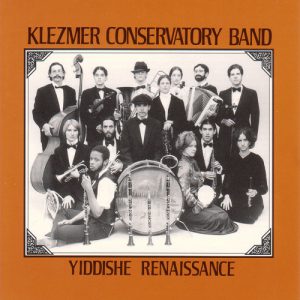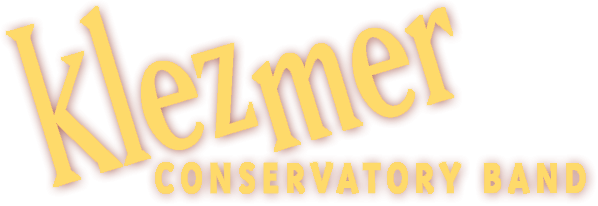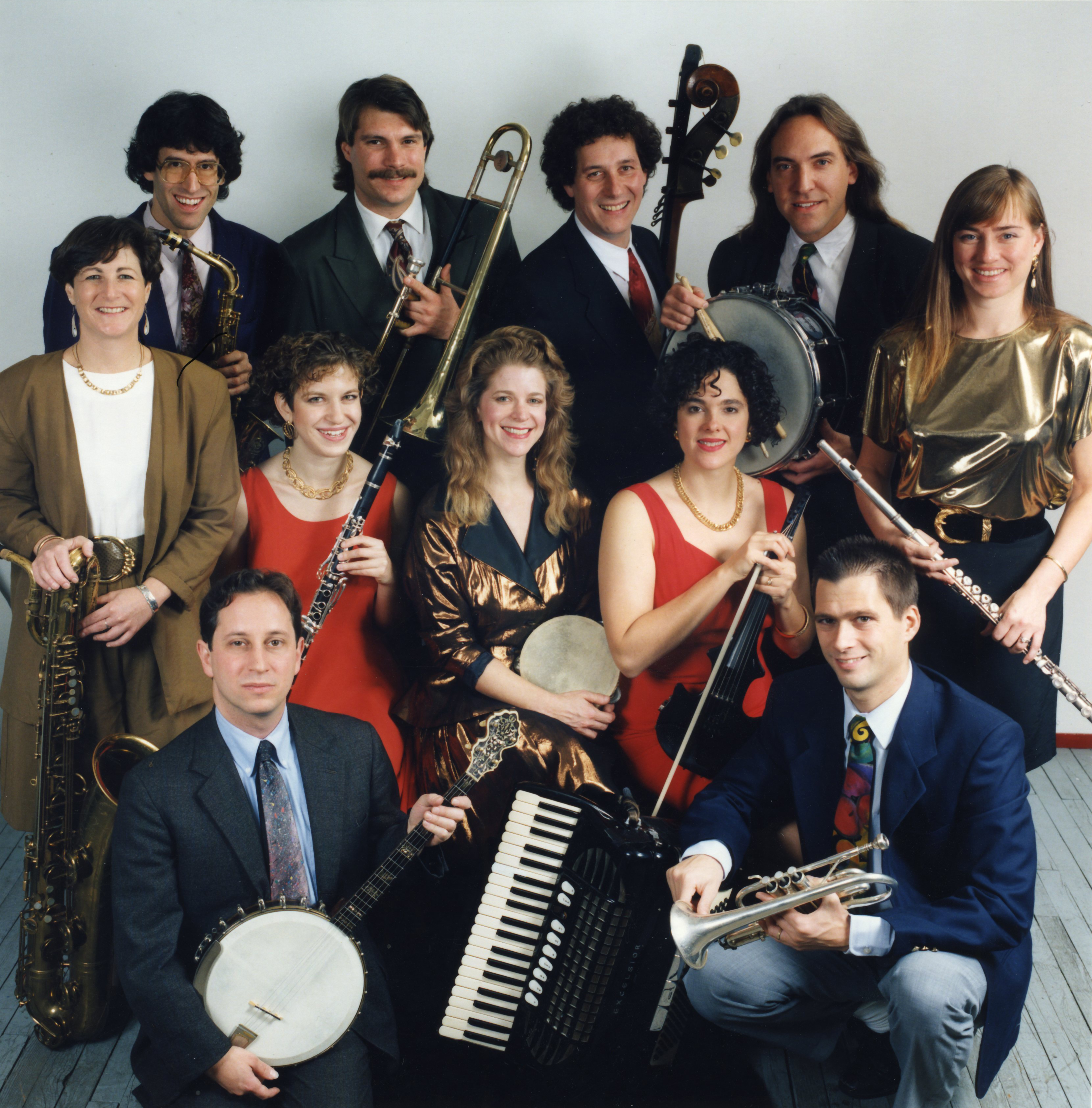Hi there! If you’re checking out our website it’s probably because you have some interest in the Klezmer Conservatory Band – as well you should! I’m hoping that this blog will be a way that we might get to know each other. I’ll use this first blog entry to look back a bit at some of the great fortune that has come our way over the past forty years.

When we first started playing together (the exact date of our first concert performance was February 17, 1980), it would have been hard to imagine the path our band’s career would take, after all the term “Klezmer Music” had actually been coined (by Klezmer scholar Walter Zev Feldman) only a few years before. Previous generations had never settled on an official name for the repertoire and, until its late 1970s resurgence, it was probably assumed that it would never need a name since, until that time, the whole genre seemed destined to simply fade into obscurity and disappear.
But its fortunes were soon to take a very different turn. A concert ensemble had gelled out of the informal student jam sessions that I organized at the New England Conservatory in 1979, and that ensemble included lots of wonderful musicians, all of whom were, at the time between the ages of eighteen and thirty. Our original cohort included Frank London, Ingrid Monson, Dave Harris, Mimi Rabson, Don Byron, Barry Shapiro, Abby Rabinovitz, Jim Guttmann and Judy Bressler, all of whom ended up being pivotal forces in klezmer’s resurgence.
It was our baritone saxophonist, Merryl Goldberg who actually arranged for us to give our very first performance and it was that first concert that actually launched our career. Before we even left Brown Hall at Boston’s New England Conservatory on that wintery Sunday afternoon, we already had three more bookings lined up and, within a few months, we’d scheduled performance engagements that would take us to New York City, Philadelphia, upstate New York, Vermont, New Hampshire, and Montreal.
Prodding by KCB fiddler Marvin Weinberger to send out copies of the cassette recording of our set from that first concert led to more engagements, the most pivotal of which was our performance on PRI’s Prairie Home Companion the following year, since that one broadcast earned us an immediate national following. Marvin and our first drummer, Charlie Berg soon led the efforts to have us record our debut LP, Yiddishe Renaissance. Of course, at the time we had no idea that the overnight success of a crowd-funded release would lead to contracts for nine more recordings for the Vanguard and Rounder record labels.
Soon after that, my brother, Steve Netsky decided to move to Boston and manage the band (also playing guitar, banjo and mandolin on our tours). His efforts led Jon Aaron’s concert management agency to add us to his roster for major bookings. The following year, an appearance at her sister’s wedding convinced filmmaker Michal Goldman to focus on the band in her 1986 First-Run Features VHS release (still available only on VHS!), “A Jumpin Night in the Garden of Eden.” That film featured us in a St. Paul Prairie Home Companion performance and broadcast, and we ended up being invited to perform on that show another ten times after that. Meanwhile, following numerous domestic folk-festival performances and a high-profile children’s video release featuring actor Robin Williams, additional international touring began, taking us to Mexico, Germany, Poland, the Netherlands, England, Switzerland, Italy, Australia, New Zealand and Russia.
My brother Steve decided to stop touring and managing the band in the early 1990s and Jim Guttmann, our bassist and current manager, took on that role. It was also in this period that the band’s reputation really took off internationally. We connected with the legendary Joel Grey in a joint performance at New England Conservatory in 1992. Seeing us in that Jordan Hall show inspired American Repertory Theatre director Robert Brustein to involve us in a musical that he was working on at the time. Projects initiated by both Joel and Bob came to fruition in 1994, a year when at least some subset of our band was working almost every night.
Teaming up with Itzhak Perlman in 1997 has, so far, led to twenty-two years of touring together, collaborations on three of his recordings and appearances in three of his PBS Great Performances videos (not to mention at one of his daughter’s weddings!). The first of those shows (“In the Fiddler’s House”) led to an opportunity to share the spotlight with Mark O’Connor, Del McCoury, Gil Shaham, Marvin Hamlisch, Natalie Cole, Jessye Norman, Stevie Wonder and many others in “To Life!,” the CBS 50th anniversary salute to Israel. Our many high-profile performances with Mr. Perlman at venues including Tanglewood, Wolftrap, Ravinia, the Hollywood Bowl, Blossom, the Mann Center and Saratoga led to even more visibility and, in 2002 we teamed up with the Atlanta Symphony for a joint performance. Since then, we’ve shared the stage with the LA Philharmonic, the Toronto Symphony, the Florida Symphony, and the Boston Musica Viva.
Along the way, we’ve watched the audience for klezmer grow and grow, both in the U.S. and internationally. We’ve also seen klezmer and Yiddish music (ours and that of other bands) find its way into numerous commercial films, advertising campaigns, theatrical projects, Spotify and Youtube channels and educational endeavors, including KlezKamp, KlezKanada, KlezFest St. Petersburg, KlezFest London, Philadelphia’s InterGalactic Jewish Music Festivals, the Krakow Jewish Music Festival, the Boston Jewish Music Festival, Klezmerpalooza, YiddishFest, Yiddish New York, UClezLA, the Ashkenaz Festival, Amsterdam’s International Jewish Music Festival, Silkroad’s Global Musician Workshops and on and on. I’ve personally been blessed with the opportunity to teach three generations of klezmorim and Yiddish singers at New England Conservatory, most recently serving as co-chair of the school’s Contemporary Improvisation Department alongside Eden MacAdam-Somer, the KCB’s current Yiddish vocalist.
In other words, it’s been quite a journey. When I think back forty years, klezmer was, at that time, not only a totally obscure musical genre but a subject with virtually no English language literature exploring its history. In my next blog, I’ll introduce you to some of the essential readings on klezmer and the multiple ways that authors have looked at its roots and resurgence.
Meanwhile, hoping to see you all soon – maybe at our next show!!!
Dr. Hankus Netsky
Founder and Director,
Klezmer Conservatory Band

